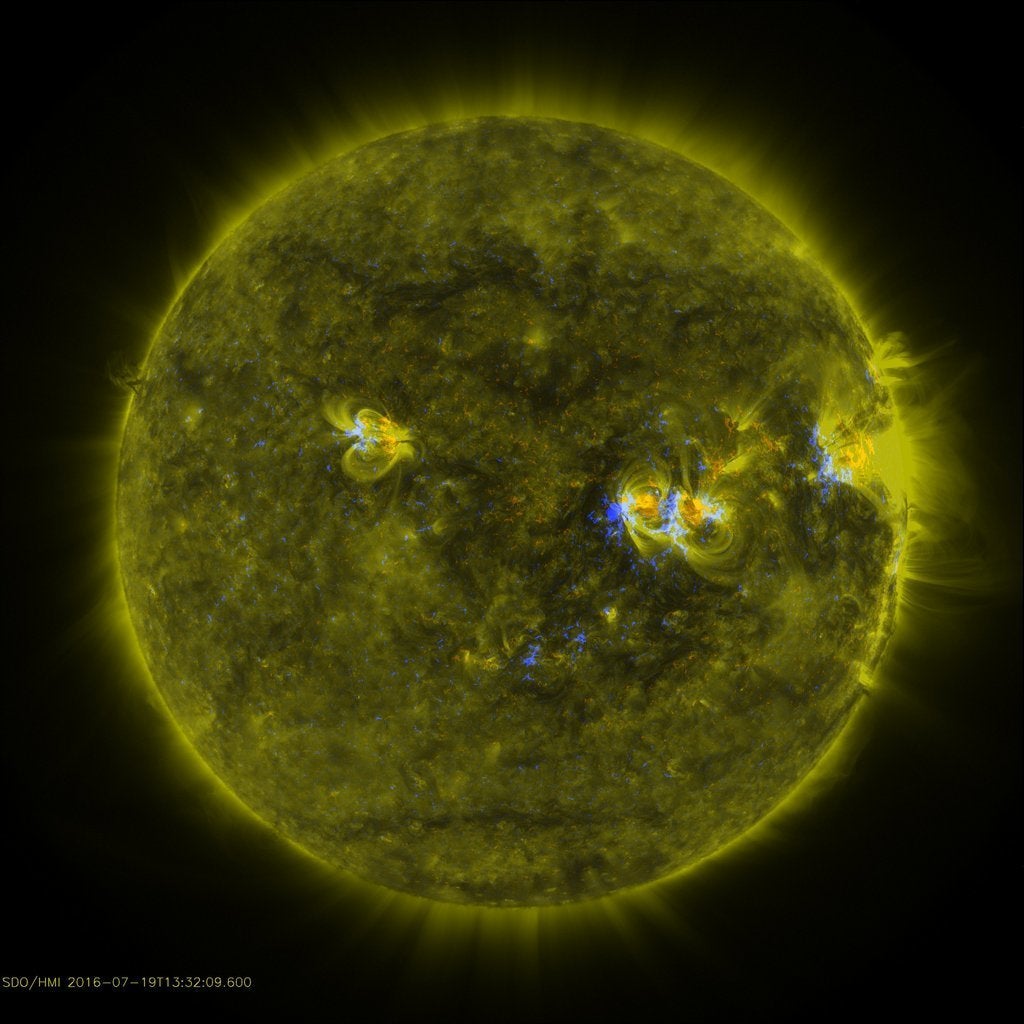A large group of sunspots moving across the surface of the sun have revealed just how tiny our planet is.
The larger spots are about the size of the Earth, while the region they span is equal to 16 Earths lined up, according to space scientist Karl Battams.
The sun is nearly 900,000 miles across, 109 times the diameter of the Earth and weighs approximately 333,000 times as much.
The dark marks are active regions of our star, and eject solar flares, radiation spat out from the sun’s surface that sometimes release solar plasma into space, as Mashable reported.
The sun is currently believed to be going through a quiet period in its approximately 11-year solar cycle, but the sunspots represent a reawakening.
Times of less solar activity are referred to by astronomers as “solar minimum”.
Several satellites have been enlisted in the task of capturing the sun’s activity. One of the objectives is to identify solar flares which bring charged particles to Earth’s atmosphere.

Beside the incredible auroras triggered by the flares, particularly powerful flares can also disrupt radio communications and sometimes harm satellites in space.
Solar storms, meanwhile, can even shut down parts of the power grid and disable communications equipment on land.
Last week, NASA’s Solar Dynamics Observatory captured an unusually massive “coronal hole” forming on the upper half of the sun.
It’s a natural part of the sun’s lifecycle, but it looks pretty terrifying.
As NASA explains:
“Coronal holes are the source of a high-speed wind of solar particles that streams off the sun some three times faster than the slower wind elsewhere.
“While it’s unclear what causes coronal holes, they correlate to areas on the sun where magnetic fields soar up and away, without looping back down to the surface, as they do elsewhere.”
